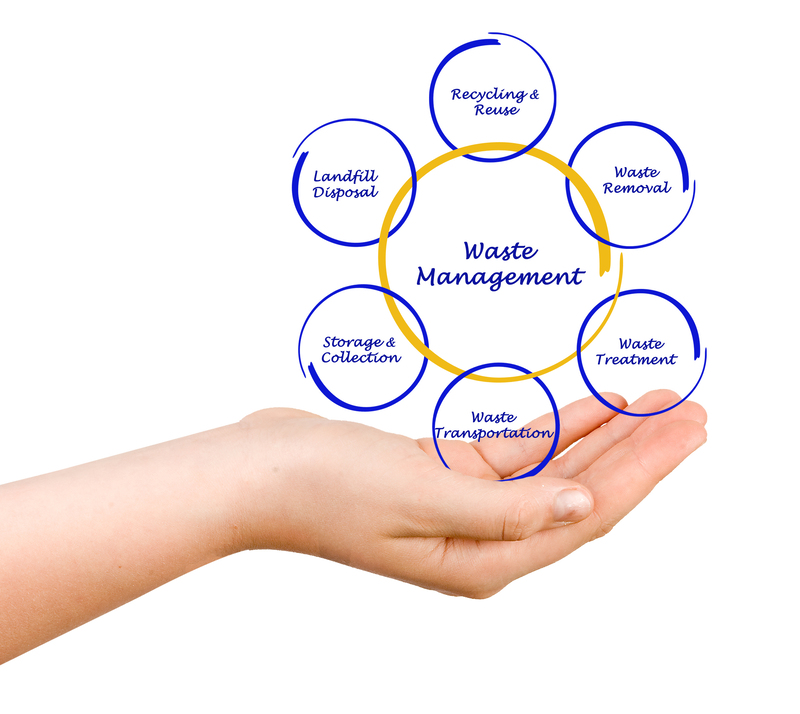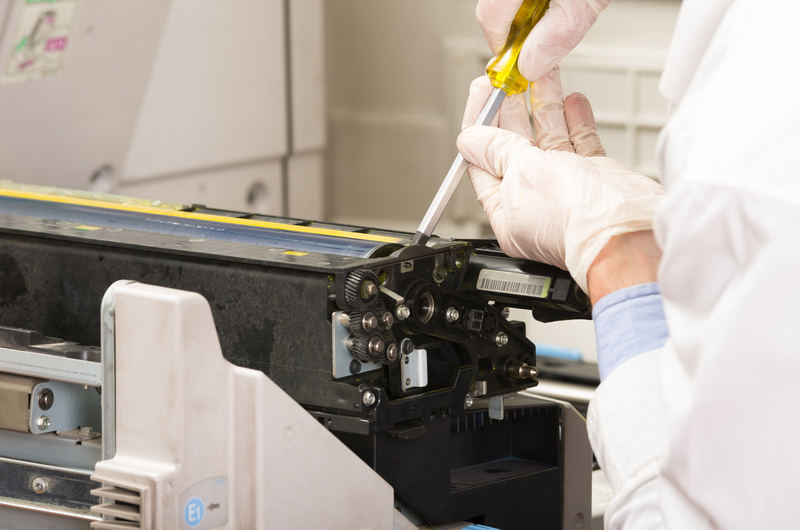Effective Tips for PPE Waste Management at Home and Work
Personal Protective Equipment (PPE)--such as masks, gloves, face shields, and gowns--has become a staple in our daily lives, especially in the wake of global health crises. While essential for safety, improper disposal and management of PPE can threaten environmental and public health. Whether you're at home or in a workplace, understanding proper PPE waste management practices can help prevent pollution, reduce infection risk, and support sustainability.

Why PPE Waste Management Matters
During the COVID-19 pandemic, the world saw an exponential increase in the use of disposable PPE. This surge led to a significant rise in PPE waste--much of it improperly discarded. Effective management of PPE waste is crucial to:
- Protect public health by preventing contamination and the spread of diseases.
- Safeguard the environment from pollution by non-biodegradable plastics.
- Ensure compliance with local regulations regarding medical and hazardous waste disposal.
- Promote a sustainable future by supporting recycling initiatives when possible.
Understanding Different Types of PPE Waste
There are several types of PPE commonly used at home and work. Each kind may require different PPE waste disposal methods:
- Masks (surgical, N95, cloth)
- Gloves (latex, nitrile, vinyl)
- Face shields and goggles
- Gowns and protective clothing
- Sanitizer wipes and tissues
*Items like reusable cloth masks need different handling from single-use products. Knowing the proper PPE waste management protocol for each type minimizes risk and environmental impact.*
General Principles of PPE Waste Management
While disposal regulations may vary by locality, certain principles remain universal:
- Segregation: Separate PPE waste from regular household or office trash to avoid contamination.
- Containment: Place used PPE in a dedicated, leak-proof waste bin.
- Labeling: Mark bins clearly to prevent accidental contact or mixing with recyclable materials.
- Safe Handling: Always use gloves or sanitize hands after handling PPE waste.
- Regular Disposal: Empty PPE bins frequently to reduce infection risk and odours.
Effective PPE Waste Management at Home
1. Dedicated PPE Waste Bin
Set up a dedicated PPE waste bin in a convenient location, such as near your home's entrance. Use a bin with a lid to reduce the risk of airborne particles.
- Line the bin with a garbage bag for easier disposal and less direct contact.
- Label the bin as "PPE Waste Only" to prevent mixing with household rubbish.
2. Proper Removal and Handling
Always follow safe removal techniques to prevent cross-contamination:
- Remove gloves by peeling away from the wrist without touching the outside surface.
- When removing a mask, handle only the ear loops or ties.
- Wash or sanitize hands immediately after handling used PPE.
3. Packaging and Disposal
Before placing used PPE in the bin:
- Double-bag items if someone in the household is ill or suspected to be infectious.
- Tie bags securely to contain contents and odours.
- Wait 72 hours (if recommended by local authorities) before putting waste bags out for collection to reduce risk to sanitation workers.
4. Educate Family Members
Make sure everyone at home understands the importance of proper PPE waste management. Post instruction sheets near waste bins as reminders. Encourage children and elderly members to follow safe disposal practices.
5. Minimizing Single-Use PPE
Where possible, opt for reusable PPE, such as washable cloth masks, which not only reduce waste but are also cost-effective.
- Wash cloth masks with hot water and detergent after each use.
- Do not mix contaminated masks with regular laundry; handle with care.
PPE Waste Management at Workplaces
Workplaces, especially those in healthcare, education, retail, and service industries, generate significant PPE waste. Managing PPE waste at work requires clear policies and regular training to protect employees, customers, and waste handlers.
1. Providing Adequate Disposal Stations
- Install PPE-specific disposal bins at main entrances, workstations, break rooms, and restrooms.
- Use touch-free bins to lower cross-contact risk.
- Ensure bins are emptied regularly by trained staff wearing appropriate PPE.
2. Staff Training and Awareness
Provide regular training on:
- Correct PPE usage and removal techniques.
- Safe handling and disposal of PPE waste.
- Reporting and managing accidental spills or exposure.
- Updates on local disposal regulations or company policies.
3. Segregating PPE from Other Waste Streams
Clearly separate PPE items from recyclables and general waste. Improper segregation can lead to recycling contamination or present health hazards.
- Use bins of different colours or labels (e.g., red for PPE, blue for recycling).
- Instruct cleaning staff to wear gloves and sanitize hands after waste collection.
4. Handling Contaminated Waste
If there is a risk of biological contamination (e.g., in healthcare settings or if an employee is unwell), follow local biosafety guidelines:
- Use leak-proof, puncture-resistant containers for contaminated PPE.
- Ensure handlers wear gloves, aprons, and masks when dealing with waste.
- Seal and label bags as "Biohazard" where appropriate.
- Arrange for collection by authorized medical waste disposal services for hazardous waste.
5. Encouraging Reusable Alternatives
Support the use of reusable PPE--such as washable gowns or cloth masks--when suitable. Provide clear instructions on their cleaning and storage to ensure safety.
6. Monitoring and Compliance
- Regularly audit waste management procedures to check compliance.
- Introduce checklists or log sheets for cleaning and waste disposal duties.
- Offer feedback and refresher courses to staff.
Innovative Approaches to PPE Waste Reduction
1. Recycling Initiatives
Some companies have introduced recycling projects for used PPE, especially plastics from masks and face shields. Check for local programs or companies specializing in PPE recycling.
- TerraCycle and other firms operate specialized schemes for recycling disposable masks and gloves.
- Do not place used PPE in regular recycling unless it is clear, clean, and accepted by your municipal recyclers.
2. Biodegradable and Compostable PPE Products
Switching to biodegradable PPE made from natural fibers or compostable materials helps reduce landfill burden and environmental pollutants.
- Seek out eco-friendly brands and suppliers.
- Follow manufacturer instructions for composting or safe disposal.
3. Reducing Overuse of PPE
Educate stakeholders on when PPE is truly needed to prevent unnecessary waste. Evaluate tasks and only use PPE for high-risk activities.
- Refer to updated guidelines from health authorities.
- Promote handwashing and other non-PPE safety measures where appropriate.
Regulations and Guidelines for PPE Waste Disposal
Compliance with local and national regulations is essential for proper PPE waste management. Many countries have published guidance, including:
- Designating masks, gloves, and contaminated items as "medical waste" or "infectious waste."
- Requirements for double-bagging and storing waste away from public access.
- Instructions for personal and workplace hygiene, including handwashing after waste contact.
Check your municipality or state's website for the latest instructions on PPE waste handling, especially if you operate a business or healthcare facility.
Common Mistakes in PPE Waste Management and How to Avoid Them
- Throwing PPE in public spaces: Always use a closed bin; never litter PPE on streets or parks.
- Mixing PPE with recyclables: Used PPE can contaminate the recycling stream. Dispose of it in general waste unless a dedicated recycling system is available.
- Reusing single-use PPE: Avoid reusing masks and gloves meant for one-time use to prevent infection.
- Neglecting hand hygiene: Always wash or sanitize hands after touching used PPE or waste bins.
- Not sealing PPE waste bags: Ensure all waste is securely bagged to protect sanitation workers and prevent spills.

Creating a Culture of Responsibility
Whether at home or in the workplace, developing an effective PPE waste management culture requires a team effort. Educate, remind, and motivate everyone to contribute to a safer, cleaner environment.
- Display posters and guidelines in common areas.
- Reward good practices through acknowledgment or incentives.
- Update everyone regularly as guidance evolves.
- Encourage feedback to improve your PPE waste management system.
Conclusion: Protecting Health and the Planet
Effective PPE waste management is about more than just cleanliness--it's about safeguarding health, complying with regulations, and contributing to environmental sustainability. By segregating PPE waste, raising awareness, following local guidelines, and reducing unnecessary use, you help protect both your immediate community and the world at large.
*Take action today: set up proper PPE waste bins, educate your household or workforce, and explore eco-friendly alternatives where possible. Your efforts make a difference!*
- PPE Waste Management at Home: Use dedicated bins, practice safe disposal, and minimize single-use items.
- PPE Waste Management at Work: Train staff, segregate waste streams, and follow compliance checks.
- Innovate: Embrace recycling and biodegradable options where available.
For more tips, resources, or tailored guidance on PPE waste disposal, consult your local health department or waste management authority.
